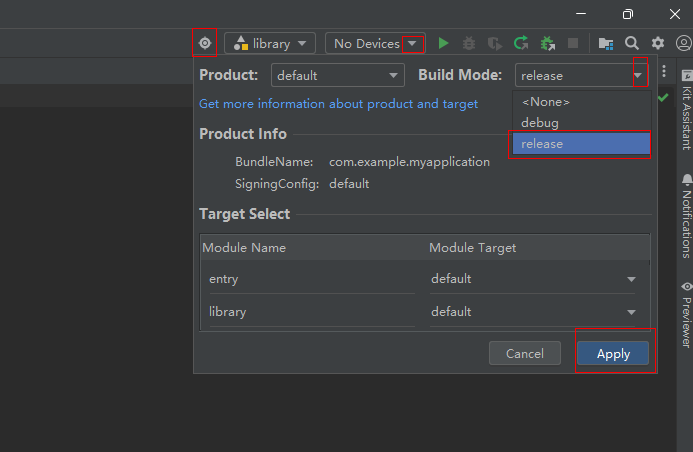harmony 鸿蒙Integrated HSP
Integrated HSP
The integrated HSP is an intermediate build product of the intra-application HSP. It aims to solve the strong coupling between the bundle name and signature of the user. > NOTE > The HSP can be used only by projects with the same bundle name, but the integrated HSP can be used by projects with different bundle names.
Use Scenario
Multiple applications in a group can use the same dynamic shared package. To reduce development costs and share code and resources, multiple applications can share one infrastructure HSP (integrated HSP).
Constraints
- The integrated HSP is only available for the stage model.
- Only integrated HSP of API version 12 or later is supported. You should set the useNormalizedOHMUrl field to true in the project-level build-profile.json5 file.
Development Instructions
Project configuration for creators: Set the useNormalizedOHMUrl field to true in the project-level build-profile.json5 file to configure the integrated HSP.
// created_party_project/build-profile.json5 { "app": { "products": [ { "name": "default", "signingConfig": "default", "compatibleSdkVersion": "5.0.0(12)", "runtimeOS": "HarmonyOS", "buildOption": { "strictMode": { "useNormalizedOHMUrl": true } } // ... } ] // ... } }Module configuration for creators: Modify the module-level build configuration file build-profile.json5 and set integratedHsp to true to specify the HSP module to be built as the integrated HSP module.
// created_party_project/library/build-profile.json5 { "apiType": "stageMode", "buildOption": { "arkOptions": { "integratedHsp": true } } }Packaging configuration for creators (.tgz Package)
(1) Configure project signature information. For details, see Signing Your App/Atomic Service.
(2) Configure the release mode.

(3) Select the library directory in Build -> Make Module ‘library’.
Directory creation for users: Create a libs directory in the entry directory and copy the .tgz file to the created directory.
Project dependency configuration for users: Add dependencies to the oh-package.json5 configuration file in the main module.
// user_project/entry/oh-package.json5 "dependencies": { "hsp": "./libs/library-default.tgz" }Project configuration for users: Set the useNormalizedOHMUrl field to true in the project-level build-profile.json5 file to configure the integrated HSP.
// user_project/build-profile.json5 { "app": { "products": [ { "name": "default", "signingConfig": "default", "compatibleSdkVersion": "5.0.0(12)", "runtimeOS": "HarmonyOS", "buildOption": { "strictMode": { "useNormalizedOHMUrl": true } } } ] } }NOTE Before installing and running an application, the user must configure the project signature information. For details, see App/Service Signature.
你可能感兴趣的鸿蒙文章
harmony 鸿蒙Creating an Application Clone
harmony 鸿蒙app.json5 Configuration File
harmony 鸿蒙Structure of the app Tag
harmony 鸿蒙Overview of Application Configuration Files in FA Model
harmony 鸿蒙Overview of Application Configuration Files in Stage Model
harmony 鸿蒙Application Installation, Uninstall, and Update
harmony 鸿蒙Application Package Overview
- 所属分类: 后端技术
- 本文标签:
热门推荐
-
2、 - 优质文章
-
3、 gate.io
-
7、 openharmony
-
9、 golang